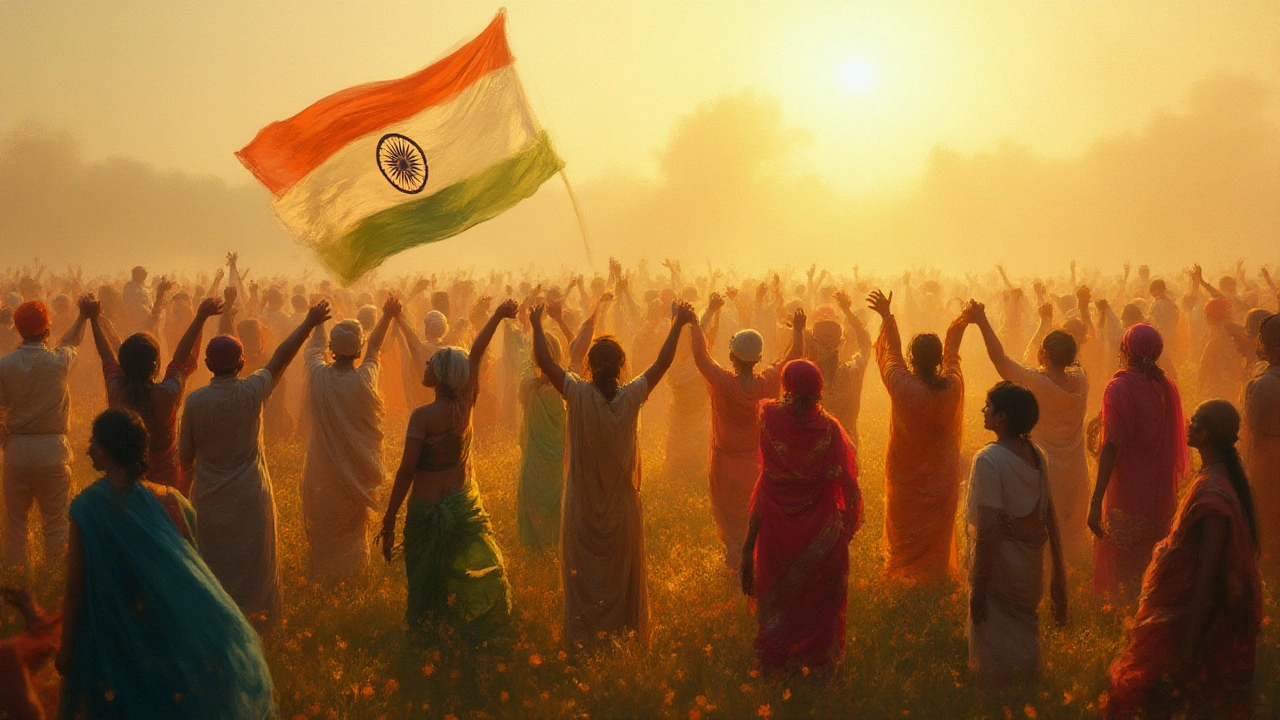
Vande Mataram: The Powerful Story Behind India’s Original National Song
Discover the origins, meaning, and cultural impact of 'Vande Mataram', the original national song of India, and why it remains a symbol of unity and pride.
Ever wondered why India has a tricolor flag, a lion‑bearing emblem, and a set of animal and plant icons? These symbols aren’t just decorative – they tell the story of the country’s identity, values, and pride. In this guide you’ll get the quick facts you need to understand each symbol and how they’re used in daily life, schools, and festivals.
The national flag, known as the Tiranga, has three equal stripes: saffron on top, white in the middle, and green at the bottom. Saffron stands for courage and sacrifice, white for peace and truth, and green for growth and prosperity. In the centre of the white stripe sits a navy‑blue wheel called the Ashoka Chakra, with 24 spokes that represent progress and the rhythm of time.
The national emblem comes from the ancient Lion Capital of Ashoka at Sarnath. It shows four lions standing back‑to‑back, a bull, a horse, a Dharma Chakra, and the motto “Satyameva Jayate” – truth alone triumphs. You’ll see this emblem on official documents, passports, and government buildings. It’s a reminder of India’s ancient heritage and the rule of law.
India chose a set of living symbols that reflect its biodiversity. The national animal is the Bengal tiger – a powerful predator that represents strength and grace. The national bird is the Indian peacock, famous for its vibrant tail and celebrated in myths for beauty and pride.
When it comes to plants, the national flower is the lotus, a clean‑white blossom that rises from muddy water, symbolizing purity and resilience. The national tree is the banyan, known for its massive canopy and roots that grow from its branches, representing eternal life and shelter.
Other important symbols include the national fruit – the mango – loved for its sweet taste and cultural references, and the national river – the Ganga – regarded as sacred and life‑giving. Each of these icons appears on stamps, school textbooks, and even in popular movies, reinforcing a shared sense of belonging.
Understanding these symbols helps you connect with the bigger picture of Indian culture. When you see a tricolor flag at a cricket match, hear the anthem at a school assembly, or spot a peacock in a garden, you’re witnessing pieces of a story that millions live and celebrate every day.
So next time you talk about India, you can drop a fact about the flag’s Ashoka Chakra or the tiger’s role as a conservation hero. It shows you know the heart of the nation, not just its landmarks.

Discover the origins, meaning, and cultural impact of 'Vande Mataram', the original national song of India, and why it remains a symbol of unity and pride.